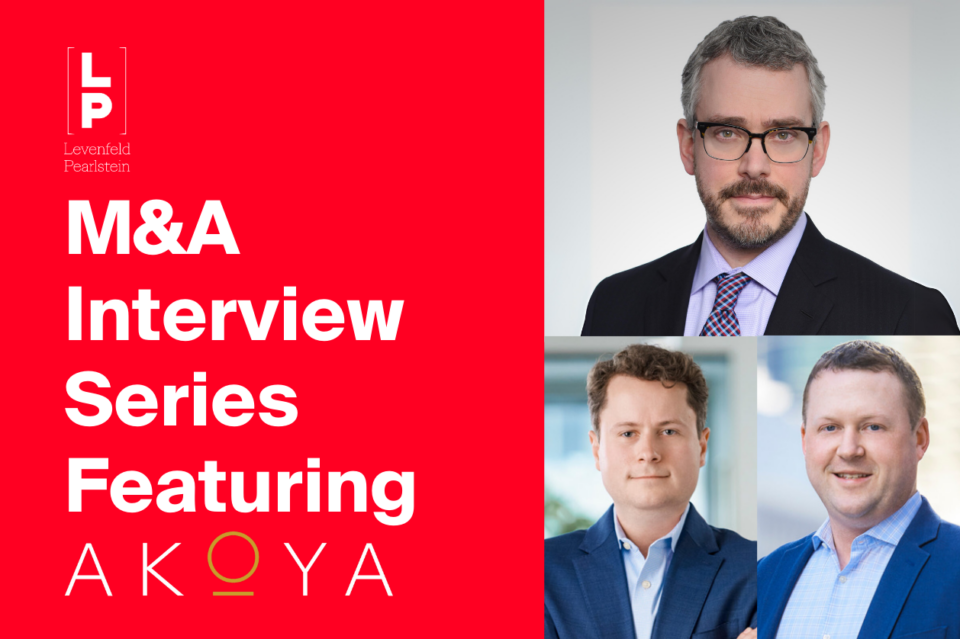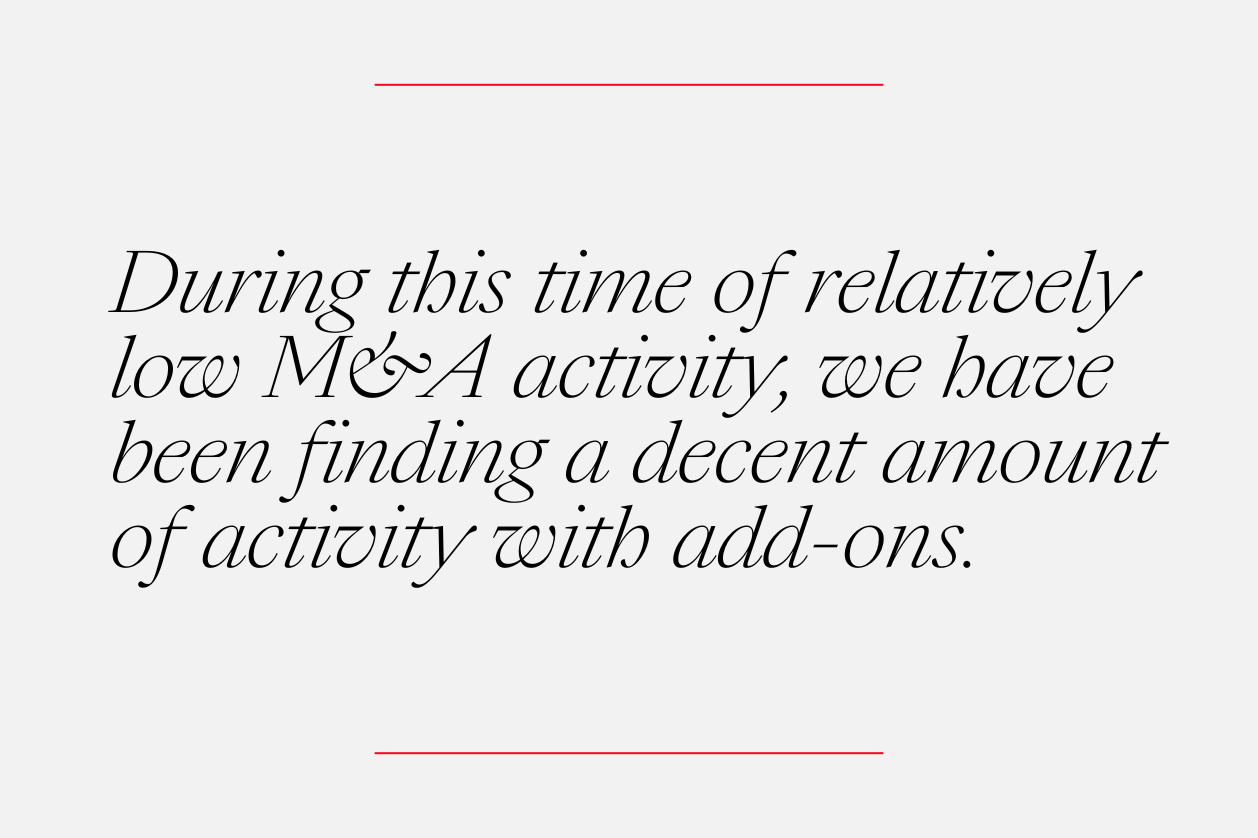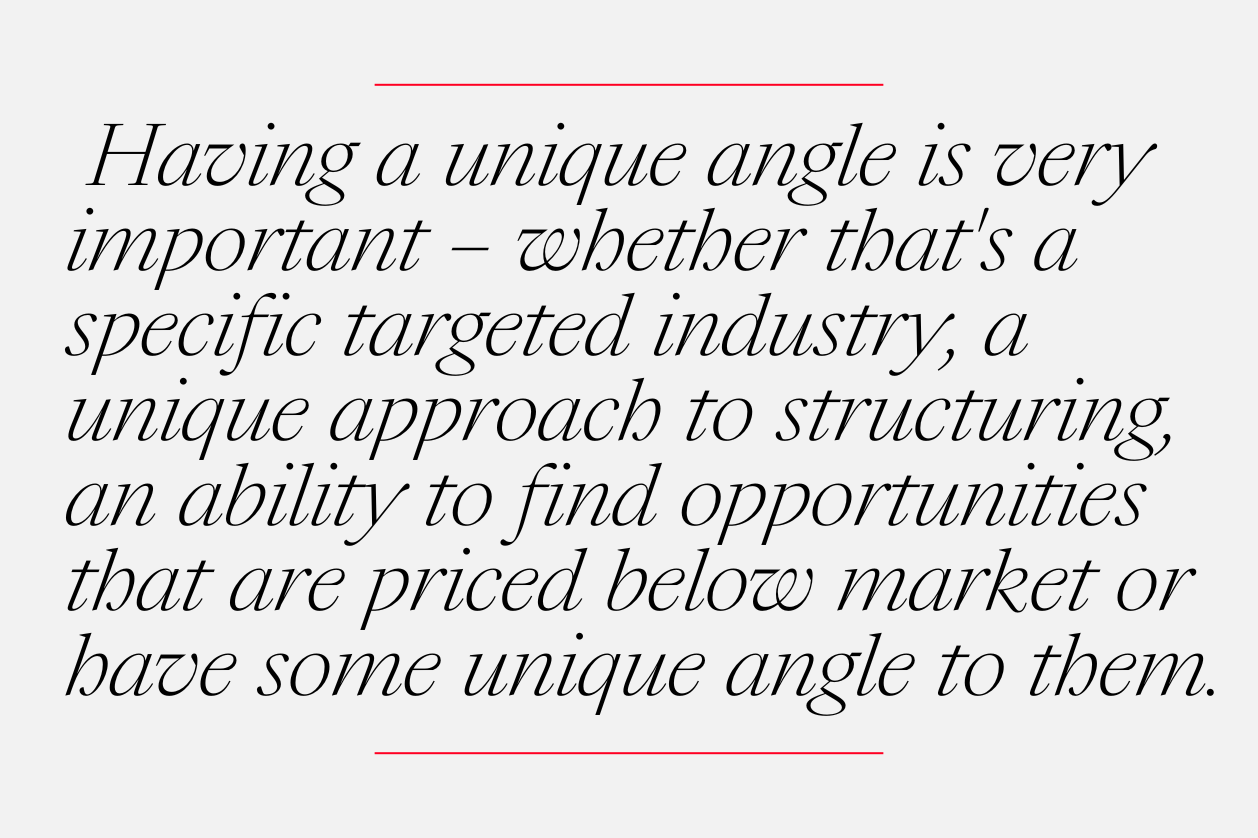Part 2: Private Equity Profiles and Perspectives: An In-Depth Conversation with Pat Riley and Lukasz Wrona of Akoya Capital

Part 2: Market Trends, Industry Segments and Advice for Business Owners Looking to Sell
To help businesses, investors, and deal professionals better understand the evolving private equity landscape in the lower middle market, Rob Connolly – a partner in and leader of LP’s Corporate Practice Group – shares a series of conversations with private equity firms and professionals.
Below is his conversation with Pat Riley and Lukasz Wrona, who are Managing Directors at Akoya Capital, a private equity fund that invests in lower mid-market businesses. In the first in a two-part Q&A conversation, Pat and Lukasz explained Akoya’s unique approach to investing in middle market companies. In part two, they discuss the current market outlook, how businesses looking to sell can differentiate themselves, and what they see on the horizon for middle market M&A transactions and PE investments. For part one, see here.
The responses below have been edited slightly for brevity and clarity.
What is your outlook on M&A in the lower middle market?
Lukasz Wrona: I would characterize the market as “modestly improving.” In terms of the M&A activity, it has been slower and recovering more slowly than expected, but I am seeing some promising signs. With the amount of dry powder on the sidelines, the flood gates will open at some point. Institutional investors will start selling their companies, which will trigger private owners to do the same. I see a lot of activity happening quickly once it starts. The biggest question is, when is it going to truly start? That is the part that’s been delayed. Everyone is saying next quarter it’s coming. That’s why I say the market is modestly improving.
Pat Riley: I agree. There continues to be a bifurcation between the A+ deals garnering interest and valuation and aren’t quite at the peak of the end of 2021 or first half of 2022 but are still garnering robust processes and attractive values. There is a big gap, at least in terms of our deal flow, between companies like that and B or C-type businesses dealing with economic headwinds or had choppy performance during the Covid period. It certainly has gotten easier to get deals done in 2024 than 2023, but it continues to be a challenging market.
The upcoming election will probably pause things a little bit. From the investment bank community, I’m hearing cautious optimism that 2025 – particularly the first half – could be strong. We are seeing some macro factors in our portfolio, such as the impact of higher interest rates and inflation on the consumer. Looking within our industrial portfolio, most of the OEMs and distributors that we sell products to, whether it’s plastics or packaging or metals, are ultimately going to the consumer and we are seeing some headwinds there. Those factors are hitting people, making them reconsider purchase decisions, and that will probably continue through the end of 2024.
Regarding the point about dry powder and the continued year-over-year record fundraising, I think it’s over $2.5 trillion. Barring some significant downturn, the pressure to deploy is ultimately going to push through the macroeconomic factors, and that will keep deal flow at some sustained level. Hopefully, we see that continue to improve as we get into 2025.
Are there any particular industries or sectors you find particularly attractive right now?
Pat Riley: One of the sectors that we are pursuing new platforms in is health and wellness. Our Sector Leaders in that industry bring broad experience to the table. We are looking at better-for-you food, consumer packaged goods, ingredients, and contract manufacturing. It’s a very large market. It continues to have decent tailwinds in terms of people being more health conscious. As we look at companies, we are battling inflation and people not spending as much on these things. But, overall, there are some nice tailwinds and longer-term trends we are excited about. We feel good about the longer-term outlook of companies in that space.

Lukasz Wrona: During this time of relatively low M&A activity, we have been finding a decent amount of activity with add-ons. I assume many investors are busy with that activity as well. You can still find smaller businesses that do not fit a platform but certainly could be a very accretive add-on to an existing investment. We have been very focused on that partially because add-on acquisitions are often an important component of our value creation plans. Also, because of the current M&A environment, we thought it would be smarter to put a little bit more emphasis on add-ons. Taking a step back, I think it’s important to point out that, although we worked through many different theses with many different segment leaders over the years, the most activity we have had continues to be in the general industrial and consumer space, and that most likely will continue.
Are there any valuation expectation gaps between sellers and buyers/investors?
Pat Riley: The valuation gap for founder-owned, family-owned businesses has started to normalize but is still challenging. There is still a significant overhang from 2021-2022 where valuations were so robust, and arguably irrational. It’s a tough conversation to have when a seller expects 10x and we’re at 6x; of course the investor / buyer view on valuation is going to move downward much quicker than the sellers, especially for founder / family-owned businesses that may not have the same impetus to sell as a PE backed business.
Lukasz Wrona: I would add that there’s push back against valuation declines. I can see that also impacting the sellers willing to go to the market. That is also prolonging transactions from getting completed because the valuation expectations are too high going in or they need to be reduced based on learnings about performance.
Do you have any lessons learned or advice for others entering the market as an independent sponsor?
Pat Riley: It’s crowded, so having a unique angle is very important – whether that’s a specific targeted industry, a unique approach to structuring, an ability to find opportunities that are priced below market or have some unique angle to them.

As we have seen this independent sponsor universe evolve, it started as a niche corner of the lower middle market, and in a lot of ways, it has supplanted what it used to be the $100-250 million fund segment. There is an increasing amount of capital being allocated to the independent sponsor segment – and along with that, competition – so being able to differentiate with industry expertise, operational and other non-transactional capabilities, and, of course, well-priced, unique transactions is essential to get mindshare from prospective capital partners.
Do you have any advice to business owners considering selling to an independent sponsor?
Pat Riley: The biggest issue we run into is a lack of understanding of the diligence and legal process, including the information required and the time it takes. Many people are told that you can close the deal in 30-60 days and for that to happen, the business must be extremely well-prepared to provide information and have legal, financial, and other advisors who are experts in facilitating transactions. That is not always the case in our experience, since nine times out of ten when we are buying from a founder or family-owned business that may not always have advisors with the requisite M&A experience. It’s part of our job, prior to signing an LOI, to really educate owners around what it’s going to take. You get what you pay for from an advisory standpoint in our experience, so it’s critical to have people who are skilled in M&A and have been through these processes. As it relates to independent sponsors specifically, make sure you understand where the equity is coming from and hold their feet to the fire on timing, commitment levels, how governance will work, etc. The biggest risk in an IS deal is the capital falling through, so an astute business owner and their advisor will hold the IS to task and make sure there are not any issues with funding as the deal progresses.
Lukasz Wrona: We have seen situations where bad advisors are not helping but hurting the client. Of course, coming from us, it always sounds self-serving, but it is true and we can see it so clearly. It’s essential to have a good handle on the financials and understanding your business going into these transactions. It gives you, as a business owner, more leverage because you understand your business and can respond quickly to our questions and not get surprised by anything. You start to lose leverage when you realize you don’t know about your business. You want to avoid that as much as possible.

Pat Riley: If you are considering selling, and particularly in a situation where you are going to be reinvesting and staying on in some capacity, get to know your partners on a personal level. One of the challenges that we have seen in a couple of different situations is everything is going smoothly, we close the deal, and then the psychological impact of still being an investor in the business but not having control or moving out of the CEO seat can be a jarring transition for someone who spent their entire life building a business. They are now in a situation where they have had liquidity, but they still have a material investment and they are ultimately not the final decision-maker for the direction of the business, whether that might be in terms of add-ons, hiring, etc. Naturally, that could lead to some conflicts. It is just as important to understand how your partners think and what type of people they are as it is to make sure the economics work, particularly in situations where you will have continued involvement in your business.
Do you have any other advice to business owners?
Lukasz Wrona: A good point to keep in mind is positioning your business for sale right and understanding that there is a balance in how you want to approach it. You want to do it when your company is doing well, at least in the TTM framework but preferably there is a trend behind the TTM as well. Several positive things are happening that suggest that will continue. When things are going well, owners don’t want to sell, and when they start seeing things not as clear, they want to engage. And it doesn’t put them in a good negotiating position. You want to kind of go to market and try to find that partner when you’re the strongest, not when you’re weak.
Pat Riley: Another thing that we have seen differentiate privately held family businesses is having a well-defined growth strategy. Obviously, we are going to scrutinize what they propose in terms of the expected growth in the business, but really knowing their industry well – the headwinds, the tailwinds, where things are going, how the company will be positioned – is crucial. If owners have a good strategic perspective, deep understanding of their industry, and a well-defined, realistic growth strategy that certainly excites us and differentiates the business.
For more information on Pat Riley and Lukasz Wrona, view their bios (Pat and Lukasz). For more information on Akoya Capital, visit their website. For more information on Akoya’s investment criteria and partnering with Akoya see here: Investment Criteria – Akoya Capital.
Interested in participating in a future interview series? Please contact Robert Connolly at rconnolly@lplegal.com.
To read other articles in this series, please see here: Insights | LP (lplegal.com)